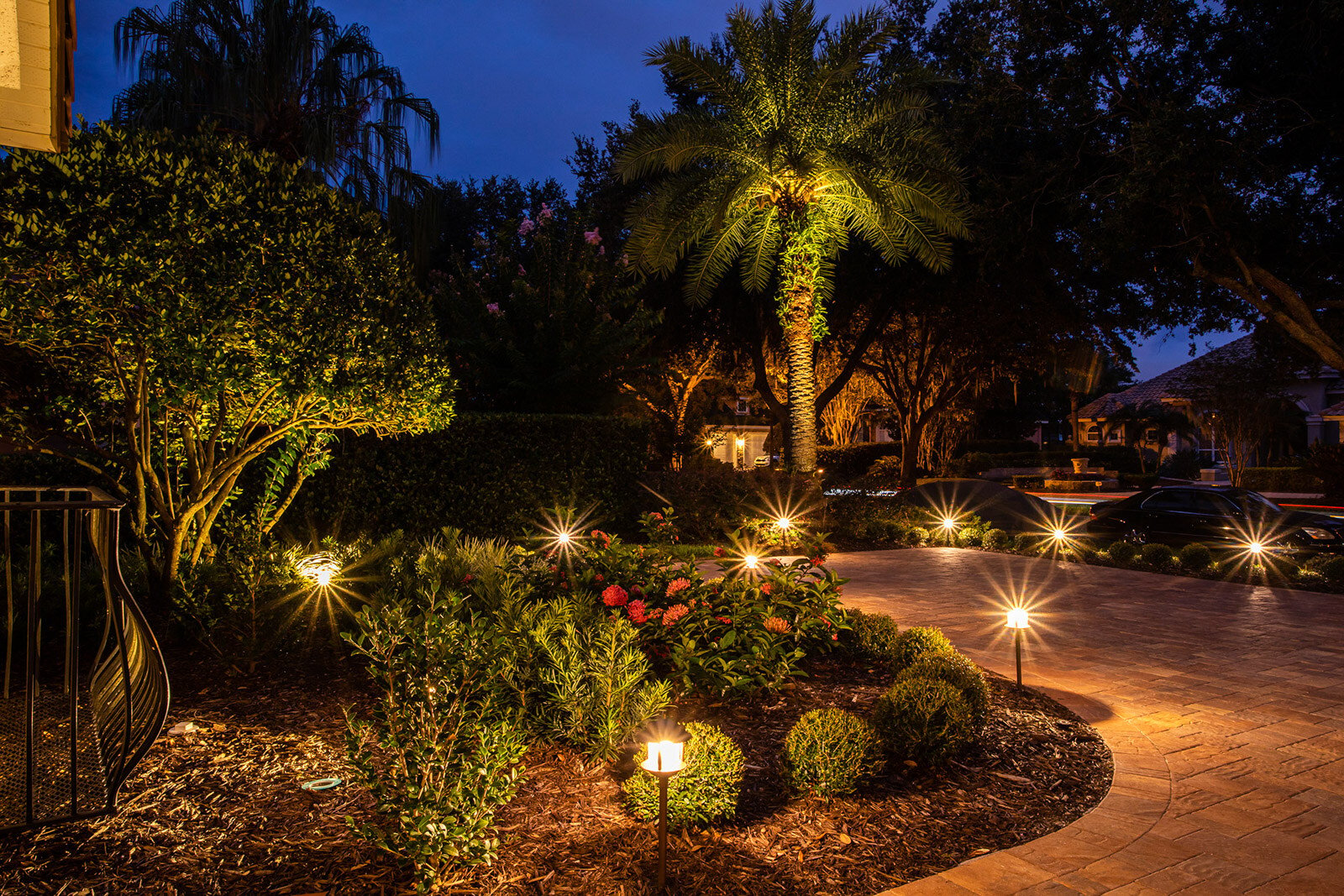Welcome to our ultimate guide on landscape lighting, a transformative enhancement for any outdoor space. This post is intended for anyone looking to illuminate their yards, gardens, or pathways effectively while accentuating the beauty of their home.
Good landscape lighting not only ensures that your outdoor areas remain functional after dark but also highlights architectural features and natural elements, increases safety, and enhances the overall value of your property. Here, we’ll explore key aspects of landscape lighting including its design, installation, and maintenance to help you create a stunning nighttime landscape environment.
Contents
Choosing The Right Lights
Choosing the right type of lighting is crucial in landscape design. Consider the purpose of each light—whether it’s for safety by lighting up walkways, functionality for outdoor kitchens and gathering spaces, or aesthetics for gardens and trees. Integrating LED lights can be a cost-effective and durable option. It’s important to balance between aesthetic and practical considerations to enhance both visibility and ambience. For further insights into avoiding common pitfalls in your lighting setup, visit https://www.freshdesignblog.com/2024/08/how-to-design-landscape-lighting-10-mistakes-to-avoid/.
The wattage and color temperature affect the mood and functionality of your space; warm lights generally offer cozy ambience while cooler lights ensure clear visibility. Incorporate various types of lights such as spotlights for focal points, path lights for walkways, and floodlights for large areas.

Strategic Placement
The placement of your landscape lighting should be strategic and purposeful. Focus on lighting up paths and driveways for safety purposes while maintaining a natural aesthetic feel. Use lighting to accentuate water features like ponds or fountains, and consider silhouette or backlighting to highlight unique plant shapes or sculptures.
Avoid over-lighting; excessive brightness can create unnatural patterns and diminish the overall charm of the area. Instead, aim for a balanced look that complements moonlighting or soft ambient external lights. Symmetry isn’t necessary; prioritize highlighting striking features rather than uniform brightness throughout.
Incorporating Automation and Controls
Advancements in technology allow better control and automation in landscape lighting. Implementing smart outdoor lighting systems can offer convenience—lights can be programmed to turn on at sunset and off at sunrise or controlled remotely through smartphone apps.
This not only enhances the functionality but also aids in energy conservation as you can manage the intensity and duration of illumination based on actual needs. Timer settings prevent energy wastage by ensuring lights aren’t left on inadvertently overnight.
Maintenance Practices
Regular maintenance is key to sustaining the longevity and effectiveness of your landscape lighting. Periodically clean fixtures to prevent dirt build-up that might impede light output. Check for exposed wires or broken lamps especially after adverse weather conditions.
LED bulbs have longer life spans but should be checked periodically for optimal performance. Ensure transformers are water-resistant and all connections are secure from water penetration which can lead to short circuits.
Eco-friendly Options
In an era focusing on environmental conservation, selecting eco-friendly lighting options such as solar-powered lights helps reduce carbon footprint while saving on electricity bills. These lights charge during the day and operate at no ongoing energy cost during the night.
Beyond solar power, choosing low-voltage LED options also significantly cuts down electricity usage. Being conscious of light pollution is likewise critical; opt for full-cutoff fixtures that direct light downward drastically reducing skyline glows which affect both wildlife behavior and star visibility at night.
In conclusion, proper planning, installation, and maintenance of landscape lighting can transform mundane exteriors into mesmerizing landscapes that offer safety, functionality, and serene beauty after sundown. Use these insights to create a harmonious balance between technology and nature in your outdoor spaces.
Leveraging strategic placement combined with modern innovations in eco-friendly technologies will ensure that your property stands out as an epitome of well-lit magnificence that perfectly blends with its natural surroundings.



